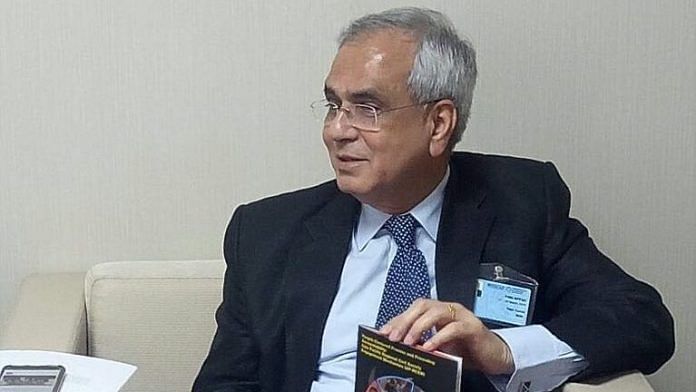New Delhi: The Niti Aayog, which has come under the scanner after it rubbished the leaked National Sample Survey Office (NSSO) data on jobs, says it will now work on improving the credibility of data dissemination and mining in the country.
“The Niti Aayog will closely work with the MoSPI (Ministry of Statistics and Programme Implementation) to improve the statistical system of the country and ensure the credibility of data,” Rajiv Kumar, Niti Aayog vice-chairman told ThePrint.
“Technology needs to be implemented for data mining and that apart data from states are critical too,” he added.
Kumar’s comments come in the wake of the Narendra Modi government being left red-faced after the leaked NSSO data showed that India’s unemployment rate was at 6.1 per cent in the year after demonetisation, a 45-year high.
The fallout sucked in the Niti Aayog as its defence of the government led to severe criticism from several quarters. This is the second time in months that the Niti Aayog has faced flak.
In July 2018, the government think-tank was slammed for first discrediting the initial economic growth figures under the GDP back-series and then releasing new and revised figures, which showed a higher growth rate under the BJP-led NDA regime than the Congress-led UPA.
Also read: Time for RBI to cut interest rates, says NITI Aayog’s Rajiv Kumar
Controversies on data
The MoSPI appears to differ with the Niti Aayog and the Modi government with regard to the country’s economic parameters under this dispensation.
In July, when the MoSPI-formulated draft set of GDP back-series data showed higher growth rate during the UPA tenure, the government revised the numbers upward for the NDA period.
The Niti Aayog had then too taken the lead in defending the government. The revised and official set of back-series GDP, which was announced by Kumar, reduced the average rate of growth numbers during the UPA regime from 7.75 per cent to 6.82 per cent.
At the same time, the average growth rate during the NDA’s four-year period was kept at 7.35 per cent.
Many, including the opposition parties, have not only questioned the credibility of the revised sets of data but also Niti Aayog’s involvement and interference in handling the government’s data collation system.
Noted economist Sudipto Mundle, who led the committee that released the first set of back-series GDP data, told ThePrint that the country’s statistical system and MoSPI needed to be ring-fenced to maintain credibility.
“Data generation and statistics are very important… There needs to be credibility,” Mundle said.
Defending Niti Aayog’s involvement in data analytics, however, Kumar said there was nothing new in this. “The erstwhile Planning Commission has also been actively involved in data mining and collation,” he said.
The Modi government replaced the Planning Commission, which formulated the five-year plans for the country, with the Niti Aayog. The Prime Minister announced the decision in his very first Independence day speech.
Also read: NITI Aayog pitches for enactment of National Medical Commission Bill 2017
Enough jobs but not enough for aspiring India
Kumar said that in the recent leaked jobs data, employment generation in the unorganised sector wasn’t taken into account. He maintained that the report did not present the true picture but agreed that the quality of jobs is a matter of concern.
“Enough number of jobs are being created but they don’t match the quality that is being demanded by the aspirational youth of the country… Also, most of them are in the unorganised sector and they do not get reflected in the jobs data,” Kumar said.
Many of them are self-employed, he said, adding that they necessarily don’t get included in the workforce. He claimed that the services sector has managed to create thousands of fresh jobs.
“Take the example of Ola or Uber or even delivery men in the hospitality sector,” he said. “These jobs have been created but whether they are they being reported is something that needs to be seen.”
Kumar also pointed out that rural distress needs more attention and a large part of the workforce engaged in agriculture needs to be pulled out and given jobs outside the ambit of the farms.
“The interim budget did spell out measures for the farm sector… This was just a necessary first step,” he added. “There is an urgent need to modernise the agriculture sector to find a more permanent solution to farm distress.”



